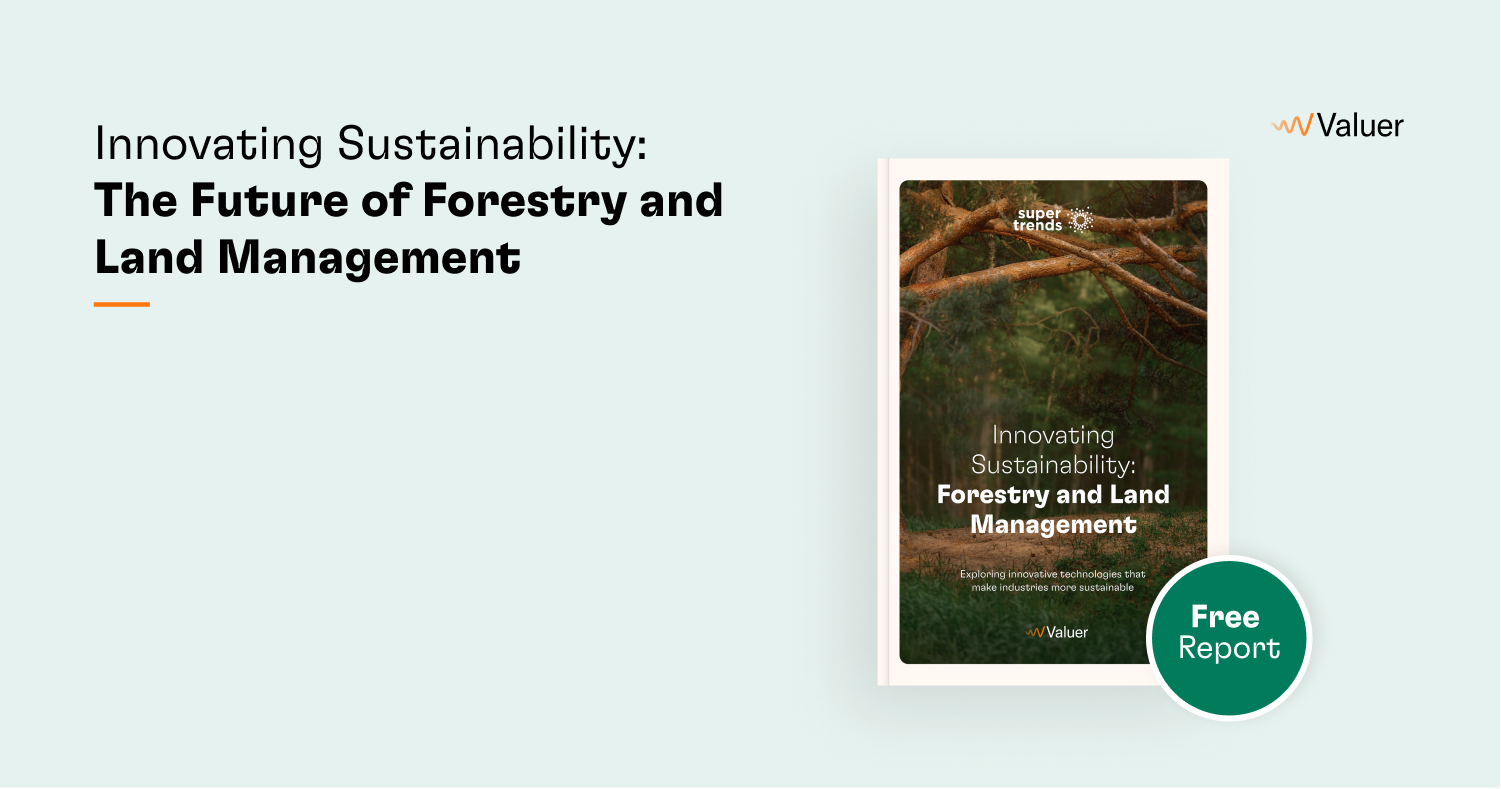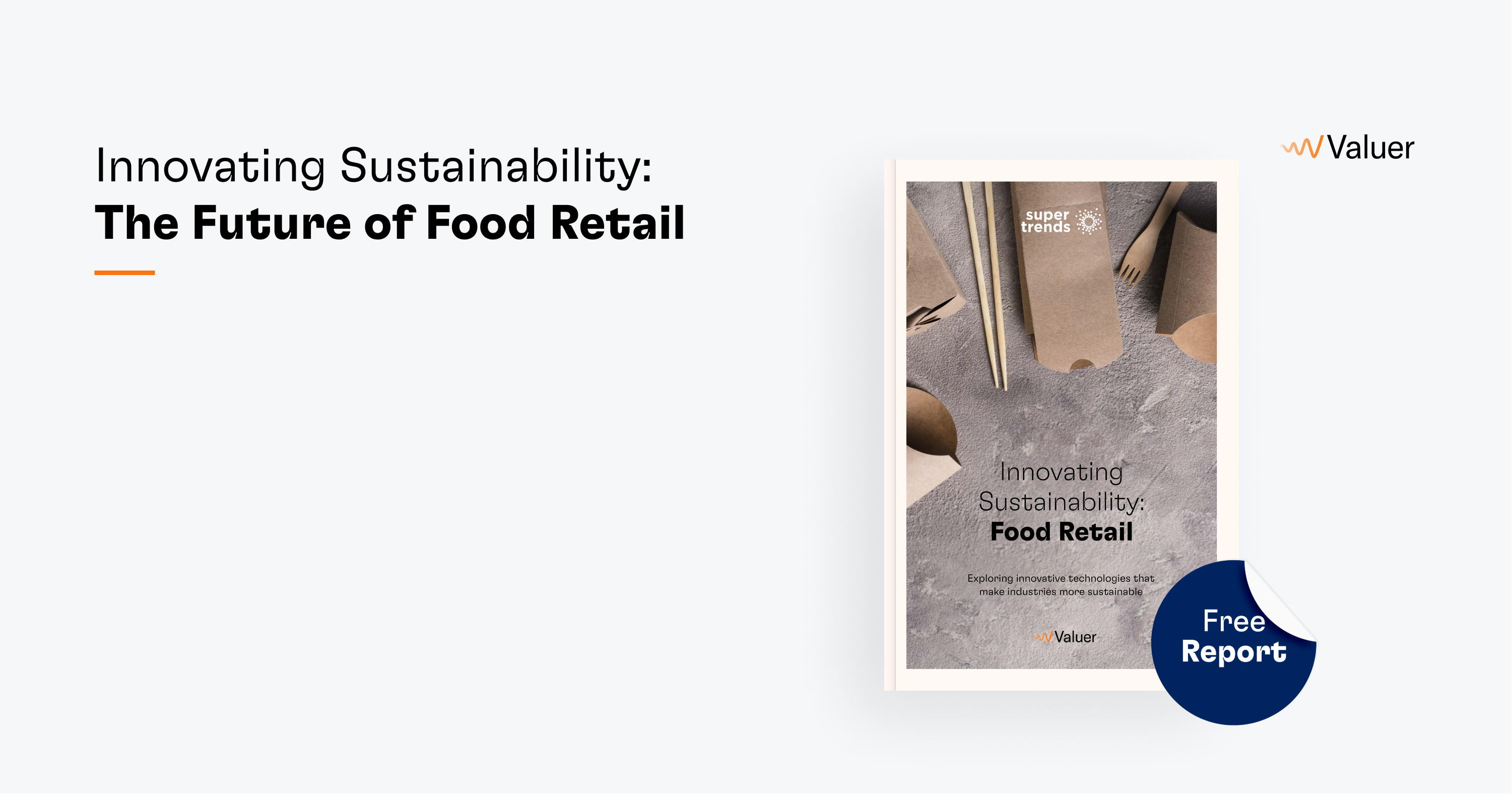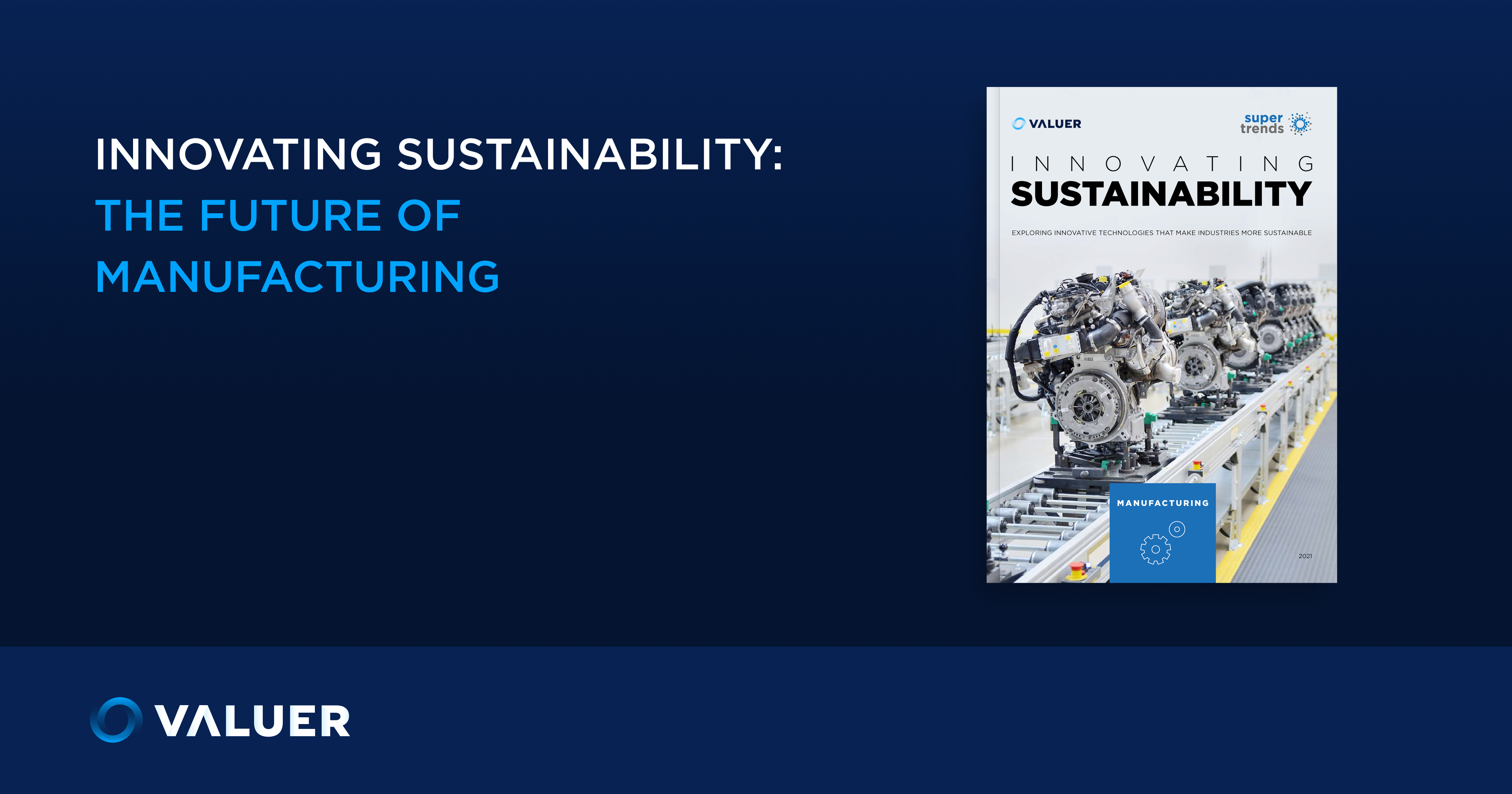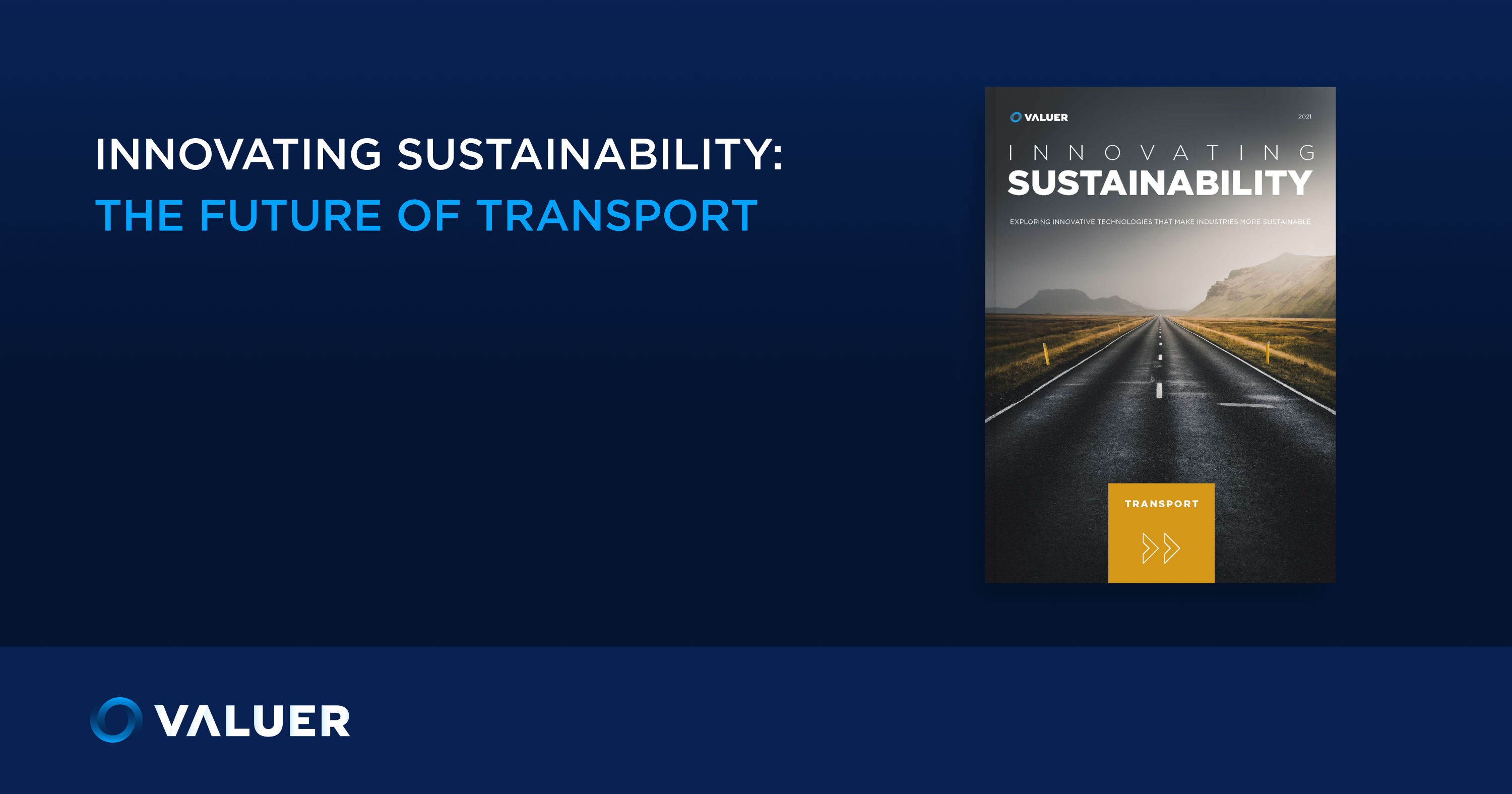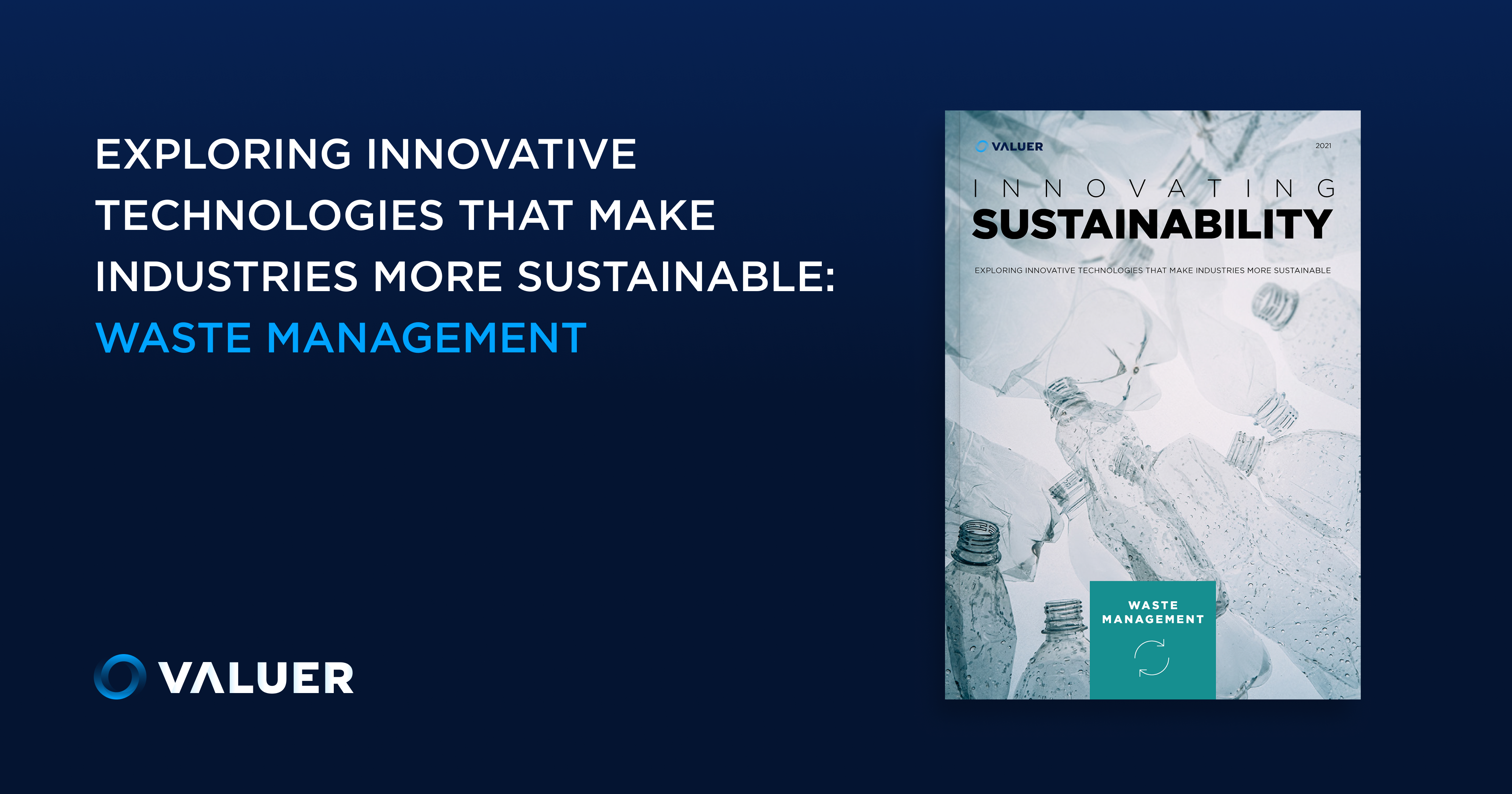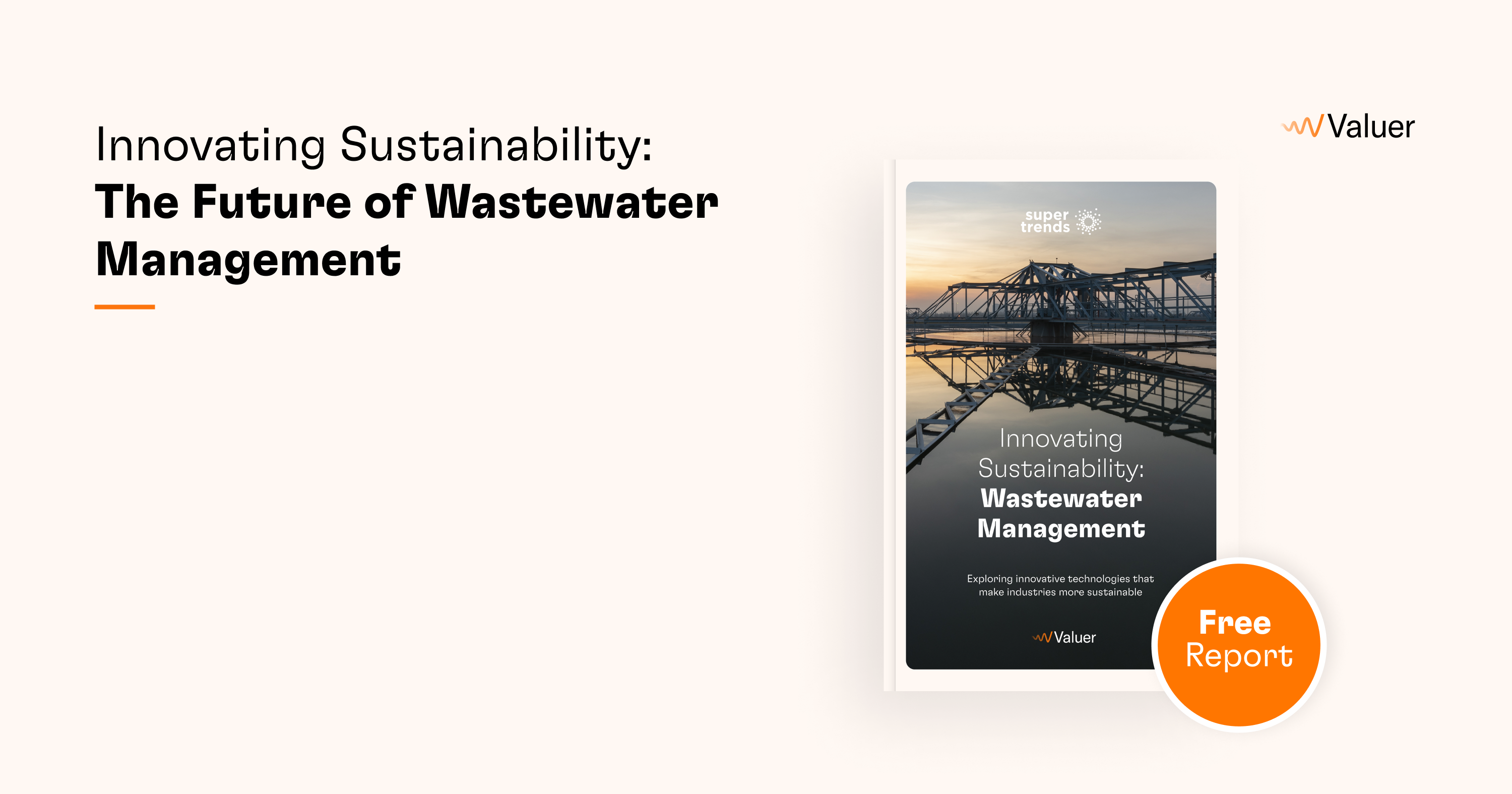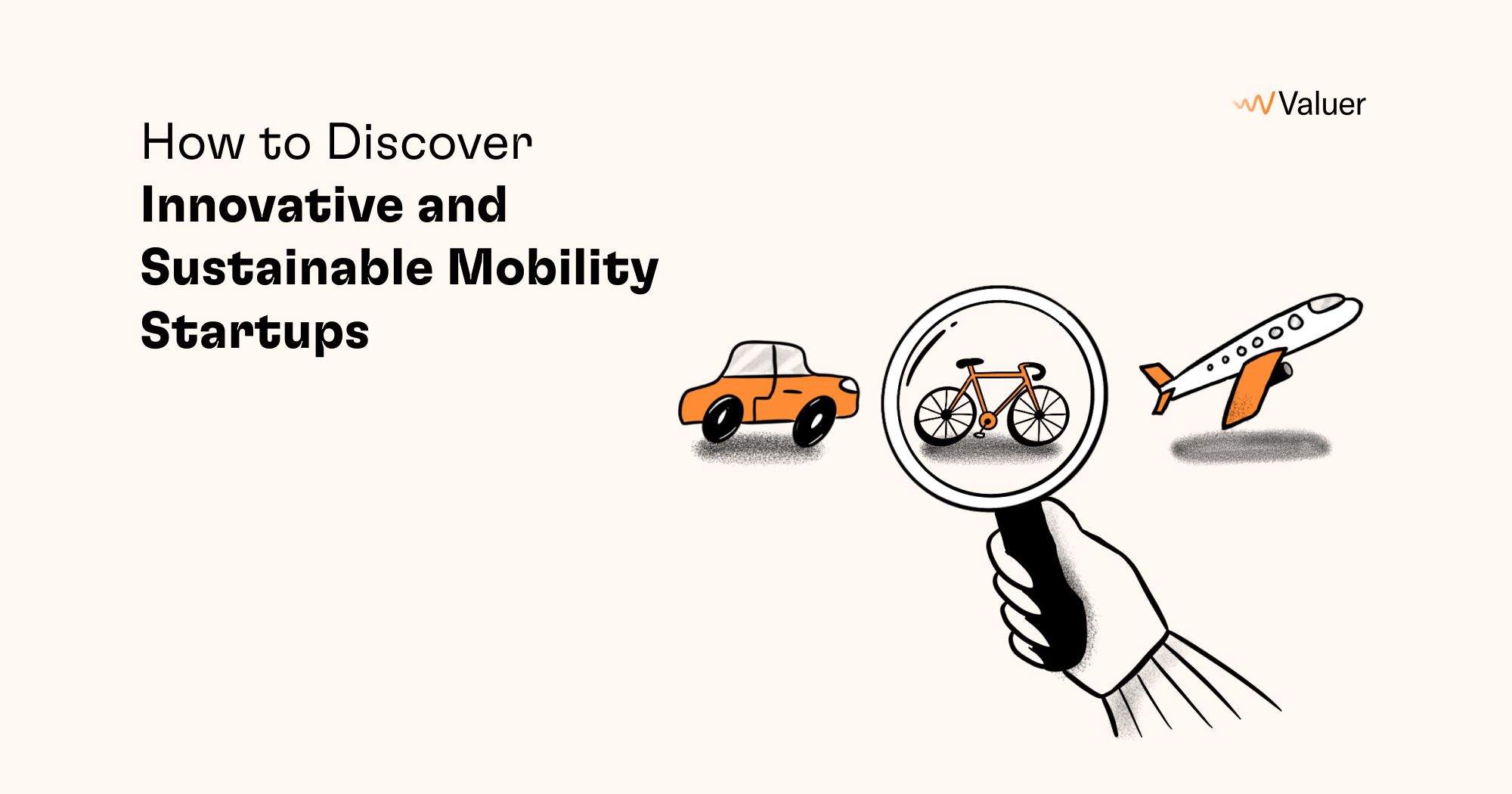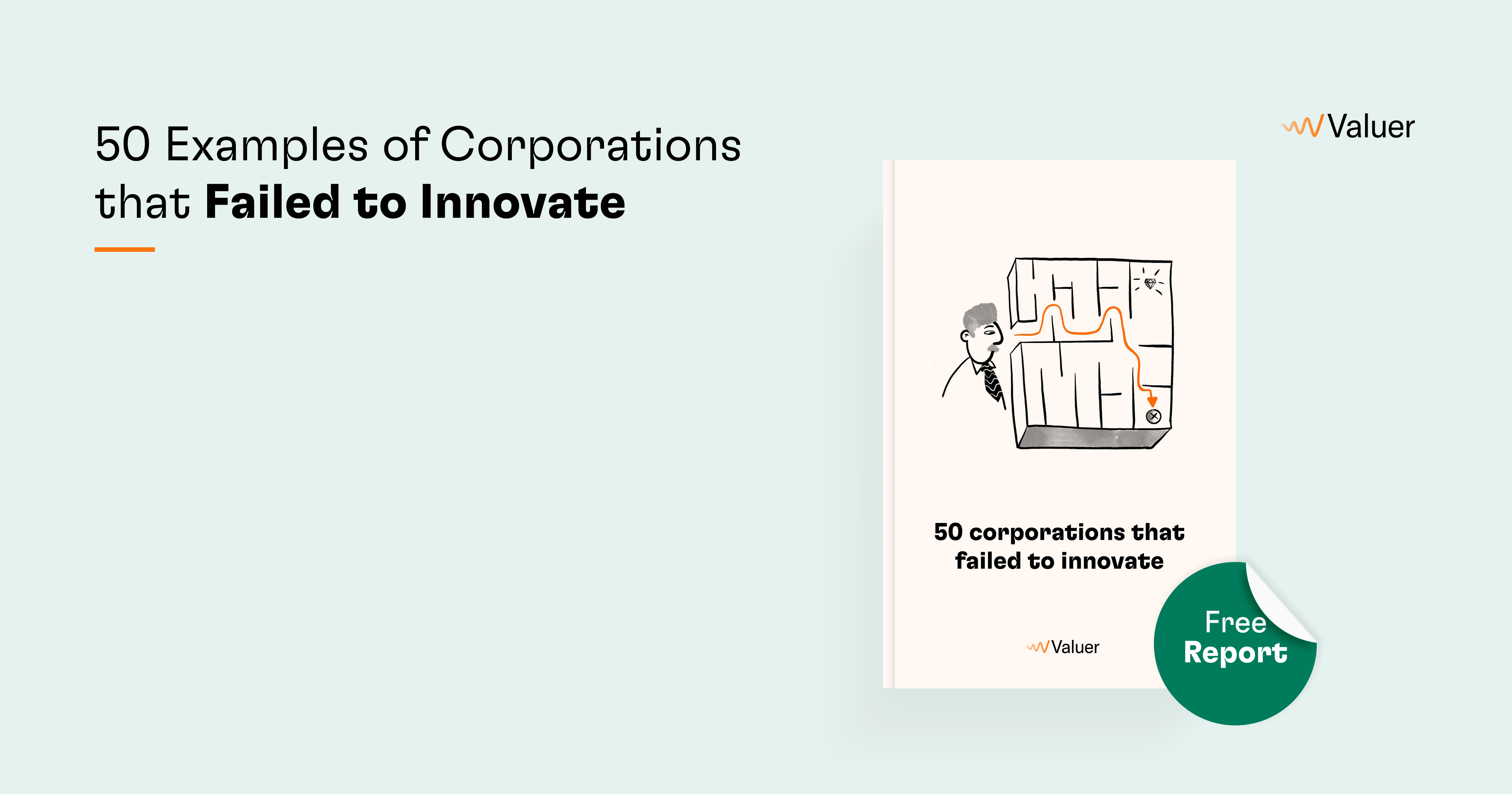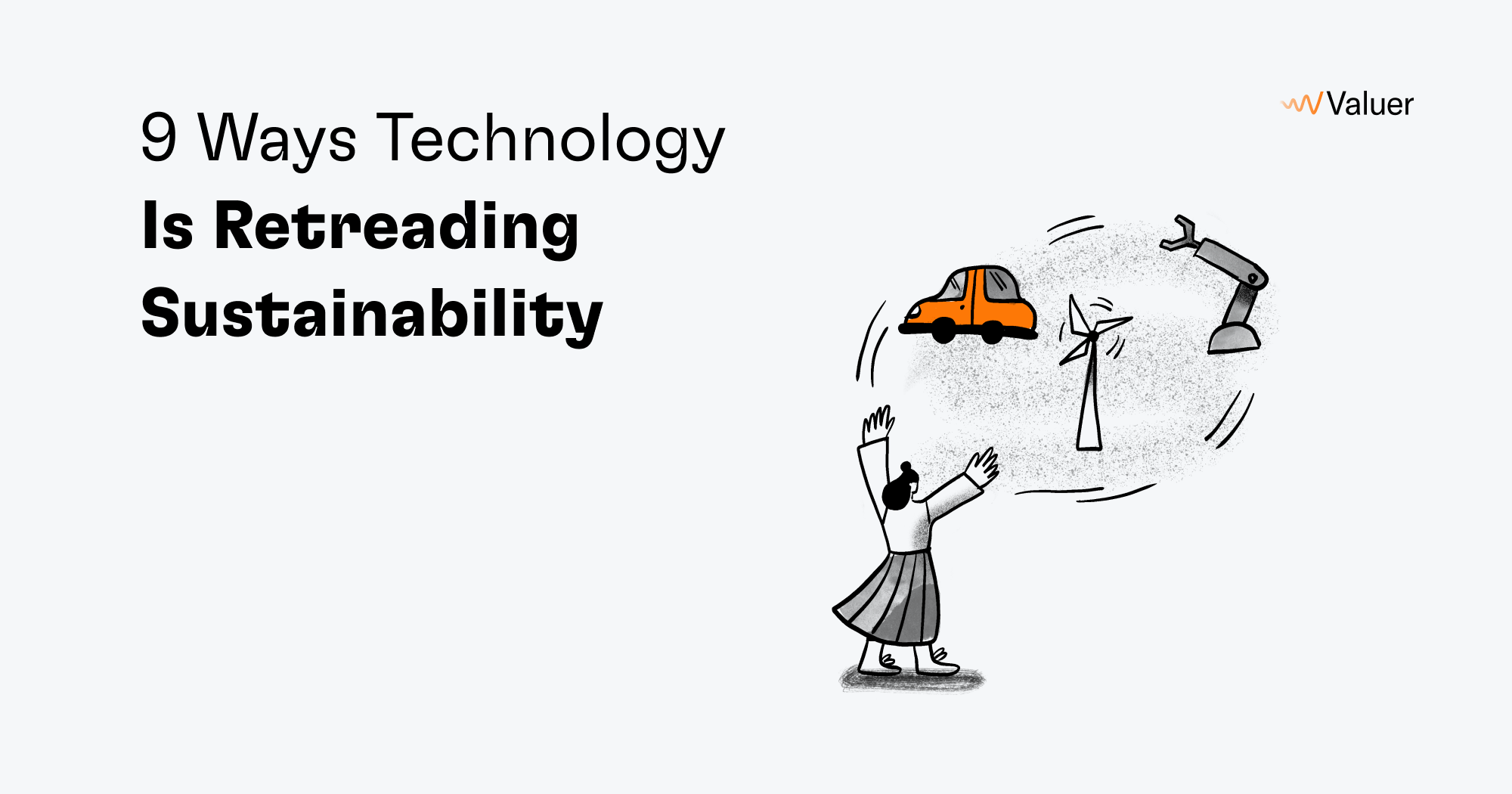*Updated December 2022
In the latest issue of the Innovating Sustainability report series, we teamed up with Supertrends to explore the most influential and disruptive technology trends transforming the fashion industry into becoming more sustainable.
Through our platform and the collaborative help from Supertrends, we generated data-driven insights on technology and companies in the fashion industry, which helps identify market disruption and opportunities with ease.
Staying ahead of disruptive technologies and on top of new market trends is vital for your business. Both Valuer and Supertrends platforms are created with the same goal in mind: to help companies make better, data-driven decisions that drive sustainable growth.
Together we offer a wide range of actionable intelligence, and our complimentary functionalities cover almost every angle that decision-makers need to assess to navigate the challenges of innovation and the uncertainties of the future.
The report includes valuable data, technology in sustainable fashion, market predictions, important milestones, case studies, and more.
The publication covers three topics relevant to sustainable fashion: alternative materials, retail and resell, and sustainable dyes.
The environmental costs of fashion
Although recognition of the fashion industry’s contribution to environmental destruction and carbon emissions has risen steadily, most consumers remain oblivious to the full extent of its global impact. According to UNEP, the fashion industry is responsible for a massive 8-10% of global carbon emissions – leading to an outsized impact larger than the combined output of all international flights and maritime shipping together.
Looking at the finished products and reconciling them with their environmental impact can be confusing; however, fashion releases emissions from pumping water to irrigate textile crops, oil-based materials and pesticides, harvesting machinery, and finally transport.
What’s more, fashion accounts for 24% of global insecticide and 11% of pesticide use and is the world’s second-largest consumer of water. As such, the industry generates approximately 20% of the world’s wastewater, responsible for dumping half a million tons of synthetic microfibers into the ocean yearly.
This dreadful performance has led to a demand for sustainable fashion brands that promise to deliver more ethical clothing, utilize novel fabrics, employ sustainable production processes, offer inclusive employment opportunities, and adopt sound marketing practices.
[Related Article - Innovating Sustainability: The Future of Manufacturing]
Faced with the changing consumer preference, the fashion industry has begun its journey down the long road to a more accountable future. To support this transition, this month’s Innovating Sustainability report is focused on the innovative solutions and circularity driving sustainability in the fashion industry, utilizing our platform to perform a deep dive into the sector and pinpoint the technology trends and innovative companies in the fashion industry.
Companies that develop and implement sustainable fashion solutions
The full version of the Innovating Sustainability report includes four case studies: three corporations (Patagonia, House of Dagmar, People Tree) that implement sustainable fashion practices and one startup that develops innovative technology (Beyond Leather Materials).
Inspired by these companies, we decided to highlight even more startups and corporations that implement and develop sustainable solutions and technologies within the fashion industry.
The innovative startups in fashion
AMSilk
Munich, Germany | amsilk.com
AMSilk is an industrial supplier of synthetic silk biopolymers. Its Biosteel fibers are natural-based and 100% biodegradable with high performance, making them applicable across industries, such as medical devices, cosmetics, and high-performance sporting goods.

Ananas Anam
London, The United Kingdom | ananas-anam.com
Ananas Anam is using pineapple waste to create a textile that provides an animal-friendly alternative to leather. The company has developed a biodegradable material named Piñatex, a natural leather alternative made from pineapple leaf fiber making it an ethical clothing alternative.
Beyond Leather Materials
Copenhagen, Denmark | explore-leap.com
Beyond Leather Materials develops a leather-like textile by using organic apple waste from the juice and cider industry. The ethical clothing leather alternative named Leap is a sustainable and vegan product that closely resembles leather in appearance, texture, durability, and use.
Circos
Amsterdam, The Netherlands | circos.co
Circos is leasing kids’ and maternity clothes from their apparel line through a circular economy service model. The company has integrated circularity within its business model and has developed a line of kids and maternal clothing that are being rented and leased instead of bought.
Dropel Fabrics
New York, USA | dropelfabrics.com
Dropel designed a hydrophobic textile that enhances the performance of natural fibers. Their garments can repel water, smell, stains, and moisture while maintaining the fabric’s softness and breathability.
DyeCoo
Weesp, The Netherlands | dyecoo.com
DyeCoo offers an industrial-scale dyeing solution that enables textile producers to dye fabrics without producing wastewater in the process. To this end, it offers the DyeOx machine and technology, a water-free and chemical-free textile processing solution. Making Dyeco one of many eco-friendly clothing brands.
FJONG
Oslo, Norway | fjong.com
FJONG has developed a clothing rental service platform to reduce people’s environmental footprint caused by clothing consumption and is what got them on our list of sustainable fashion brands. The company’s product is a web-based eCommerce platform for renting clothing and accessories.
Heuritech
Paris, France | heuritech.com
Heuritech has developed an image recognition technology to detect the latest fashion trends with almost human precision. Its predictions are made with the help of their Artificial Intelligence-powered platform that analyses millions of social media images in real-time.

Infinited Fiber Company
Espoo, Finland | infinitedfiber.com
Infinited Fiber Company is a biotech company that has patented a technology for creating fiber out of cellulose-rich waste. Based on its patent-protected Cellulose Carbamate technology, the company converts cotton-rich textile waste, paper, cardboard waste, and agricultural waste such as straw into new, cotton-like fibers for the textile industry, putting circularity and upcycling at its core business model.
JEPLAN
Kawasaki, Japan | jeplan.co.jp
JEPLAN has developed a chemical recycling or upcycling technology to convert old, unwanted clothes into new fibers with premium quality. Their polyester recycling technology promises circularity and to close the loop in the textile industry.

Kintra Fibers
New York, USA | kintrafibers.com
Kintra Fibers develops a patent-pending, sustainable way of producing synthetic fabrics that perform like traditional yarns but degrade like natural fiber. Its solution is fully bio-based, compostable, and high-performance.

Looklet
Stockholm, Sweden | looklet.com
Looklet provides a cutting edge fashion photoshoot solution for e-commerce imagery. With their photo sets and unique styling software, retailers and brands have the flexibility of dynamic merchandizing using real models in a scalable way.
Nanotex
Bloomfield Hills, USA | nanotex.com
Nanotex developed nanotechnology that can improve the performance of fabric by changing its molecular structure. By changing the anatomy at the nanoscale, the overall functionality of the material enhances while ensuring comfort and sustained quality.
Stay Wild Swim
London, The United Kingdom | staywildswim.com
Stay Wild Swim utilizes slow-fashion principles and sustainably sourced fabrics to offer environmentally friendly swimwear, t-shirts, and accessories. The company uses fibers derived from recycled wood pulp, fishing lines, and plastic bottles in its range of products. All of which has got them on our list of eco-friendly fashion brands.
Tandem Repeat
Philadelphia, USA | tandemrepeat.com
Tandem Repeat develops self-healing and repairing fibers and coatings in powder, polymer, and liquid form. The company uses a technology that isolates genes from squid and utilizes them to create biodegradable and 100% recyclable textiles.
thredUP
Oakland, USA | thredup.com
thredUP is a Resale-As-A-Service (RAAS) fashion resale platform that promotes circularity and a sustainable approach towards clothes production, usage, and re-usage. It developed a resale engine that has redistributed nearly 100 million unique garments from closets across the USA.
Vegea
Milan, Italy | vegeacompany.com
Vegea develops and commercializes technical coated fabrics and biomaterials applicable in fashion, furniture, packaging, and automotive. The company bases its production processes on vegetable raw materials, recycled materials, and bio-based polymers. It utilizes biomass and residue from the agroindustry, with waste from wine production being the primary resource.
Vividye
Gothenburg, Sweden | vividye.com
Vividye developed a printing technology to apply various colors and designs to textiles. Its approach allows it to remove the used dye when it is no longer wanted and recolor it again without damaging the material.
Werewool
New York, USA | werewool.bio
Werewool is a fiber development platform created to produce biodegradable fibers with tailored aesthetic and performance properties. Utilizing biotechnology, it develops fibers at the DNA level for sustainable textiles that meet the demands of contemporary living.
Zadaa
Berlin, Germany | zadaa.co
Zadaa developed a circular economy solution for selling and buying secondhand clothes via an app. Zadaa’s product is an app with an embedded algorithm connecting people based on their size and styles to sell and buy secondhand clothes and facilitate a circularity.
Innovative corporations in fashion
House of Dagmar
Stockholm, Sweden | houseofdagmar.com
Since its inception in 2005, House of Dagmar has been based on three sustainability pillars: high-quality fabrics, high-quality production processes, and high-quality design. From that point onward, House of Dagmar has reached multiple sustainability milestones, from introducing certified mulesing-free merino wool in 2008 to the launch of animal-friendly wool made from genuine mohair.
Moreover, in 2017, the company started measuring its ecological footprint through the European Clothing Action Plan (ECAP) & Anthesis Group. It measures several parameters such as the use of water, carbon dioxide emission, and waste, and it includes processes such as growing crops, supplier production processes, and post-consumer waste.
The quantification of its impact on the environment informs the brand’s decisions concerning new product design. Based on the previous calculations, which told House of Dagmar that in 2019 71% of its total CO2 footprint had come from the material production phase, the brand set several action goals for the upcoming period.
Firstly, the company aims to replace unsustainable materials with sustainable ones. Secondly, it aims to use more recycled materials instead of virgin materials, and last but not least, it seeks to use materials produced with fewer chemicals and less water usage.
For example, wool and viscose were identified as two materials with a significant contribution to the company’s climate footprint. Therefore, House of Dagmar has decided to increase its share of recycled wool and replace all conventional viscose with certified viscose.
House of Dagmar also established the label GOOD CHOICE to educate consumers in identifying sustainable products from its lines. Clothing items are labeled GOOD CHOICE if 50% of the fabric in each product is made from more sustainable material. House of Dagmar uses the lowest environmental impact materials, including GOTS-certified organic cotton, TENCEL™, regenerated wool, regenerated cashmere, and lyocell.
Patagonia
Ventura, USA | patagonia.com
Since its inception nearly 50 years ago, Patagonia has placed social and environmental responsibility at the forefront of its operations. In 1994, the company overhauled its cotton production supply chain and shifted its entire clothing line to organic cotton within 18 months. Ever since, Patagonia has chosen to focus on working conditions and the environment above short-term losses to their bottom line. Making them one of the best examples of an ethical clothing and eco-friendly clothing brand.
The company has launched multiple programs, including its Supply Chain Environmental Responsibility Program, implemented at supplier facilities, aiming to measure, reduce, and eliminate the environmental impact of its manufacturing processes. The impact areas range from environmental management systems to chemicals, water, energy use, and greenhouse gasses and waste.
Additionally, since 2006, Patagonia started reducing its use of wood pulp by sourcing FSC-certified paper. By 2014, the company managed to increase the amount of recycled content, and nowadays, Patagonia catalogs are printed only on FSC-certified, 100% post-consumer recycled paper. The company’s intense focus on fair working conditions, animal welfare, and environmental protection have translated into significant achievements.
For example, 87% of Patagonia’s line uses recycled materials, while the remaining is made from renewable materials. Additionally, 100% of the virgin cotton in its clothes is grown organically. Moreover, by converting fishing nets into gear, the company has prevented 149 tons of plastic waste from polluting the ocean.
Nevertheless, Patagonia is going forward with even bigger goals for circularity and sustainability. By 2025, it aims to become 100% carbon-neutral across its entire supply chain. Additionally, it intends to make apparel products from 100% recycled, reclaimed, or renewable resources and package them with 100% reusable, home compostable, renewable, or easily recyclable materials.
Besides altering its business to align with an environmentally-conscious culture, Patagonia also directly contributes to preserving and restoring the environment. Since 1985, it has awarded 1% of its sales to domestic and international grassroots environmental groups. The yearly contributions have amounted to over $140 million in cash and in-kind donations.
People Tree
London, The United Kingdom | peopletree.co.uk
People Tree is a fair trade apparel company that is a Guaranteed Status member of The World Fair Trade Organization (WFTO), which verifies its commitment to Fair Trade through independent audits and peer reviews. The company abides by the 10 Principles of Fair Trade, such as transparency and accountability, respect for the environment, good working conditions, and fair payment.
The company’s environmental policy is based on ten commitments:
-
Using only natural fibers or closed-loop, such as Lenzing-certified TENCEL™ - Using GOTS-certified organic cotton
-
Promoting organic farming practices
-
Avoiding polluting substances
-
Protection of water supplies and resources
-
Using biodegradable materials
-
Promoting environmentally responsible initiatives
-
Supporting producer partners concerning control over their local environment and community
-
Partnering with suppliers who aim to protect the environment
-
Promoting the use of traditional crafts and handmade textiles
-
Abide by 10 principles of fair trade
People Tree has also established The People Tree Foundation, an independent charity that aims to empower farmers through scaling up training, technical support, and environmental initiatives. Additionally, it contributes to raising awareness and campaigns for fair and sustainable fashion.
Since 2017, People Tree has increased GOTS-certified organic cotton by 35%, and in 2019, it reached 91%. Moreover, People Tree’s mulesing-free wool buy has increased 56% since 2016.
Furthermore, in 2018, the company launched an organic denim collection and partnered with Sarp Jeans. The company’s first production used 87.5% less water than conventional jeans production. Additionally, numerous People Tree products are covered by certifications and standards, such as OEKO-TEX® and PETA-approved vegan.
Besides monitoring ethical and social standards for its producer partners, People Tree is also committed to working with small, independent factories to help promote traditional handicraft skills. For example, in Bangladesh, the company incorporated hand weaving, hand embroidery, and hand block printing into its collections. This makes them one of the best ethical clothing and eco-friendly clothing brands on the market.
Facilitating a sustainable fashion industry
The shift towards sustainable solutions and circularity is becoming a driving force for innovation in the fashion industry; however, it remains only a glimpse into the future.
The staggering rise of fast fashion nullifies all progress towards sustainability. According to the Ellen MacArthur Foundation, increased global clothes manufacturing has led to higher consumption rates, with today’s average person purchasing 60% more clothing than in 2000. Additionally, while consumers appear to have increased their demand for apparel, they have also increased the rate of discarding old items.
The foundation estimates that less than 1% of used clothing is recycled into new garments, leading to a loss of $500 billion every year due to landfilling clothes that are slightly worn instead of donated or recycled. Faced with this grim picture, it appears clear that developing novel approaches that reuse and upcycle clothing based on circularity is fundamental to developing eco-friendly clothing brands.
To this end, Valuer and Supertrends aim to support the development of the sustainable fashion industry, helping clients harness innovative new technologies and drive the transformation towards circularity and a more sustainable future.





















